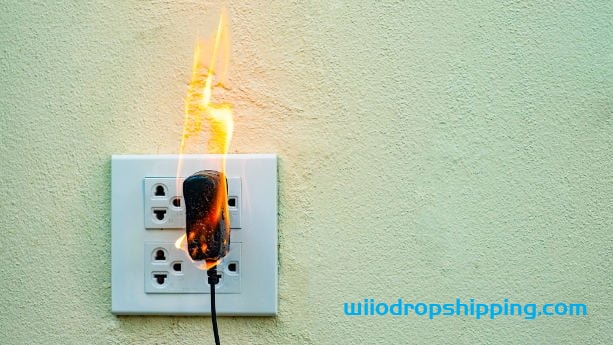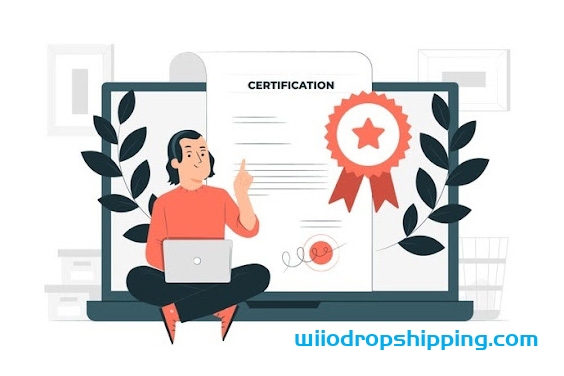Physical Address
304 North Cardinal St.
Dorchester Center, MA 02124

mporting products from China to the European Union? Depending on the product, importers are required to ensure full compliance with all relevant CE directives – a process that is far more complex than requesting a test report from your supplier.
In this guide, we explain what you must know about CE marking as an importer:
We also answer frequently asked questions about CE marking:
‘CE marking” is not a product standard, but a conformity mark signaling compliance with all applicable EC directives. The specific directives and technical standards, differ depending on the product type.
For example, electronic devices with a certain input voltage must comply with the Low Voltage Directive while finger paint must comply with EN 71 substance restrictions. While these products are very different, they must both carry the CE mark to signal compliance with all mandatory directives.
As each EC directive regulates specific products, their scope of regulation varies. Some EC directives regulate substances, while others regulate energy efficiency and electrical safety. Some directives also cover product and packaging labeling, other than the CE mark itself.
Product compliance requires more than a printed CE mark. You must ensure that the items comply with all technical standards and requirements, as outlined in the applicable EN and EC directives.
Importing and selling non-compliant items in the EU is illegal, and may result in both a forced recall and major fines, assuming that the goods make it past the customs check in the first place.
What does CE stand for on products? CE standards for “Conformité Européenne” which literally translates to “European Conformity”. In layman terms, a CE mark is a type of certification that is used to imply that the products with the said mark comply with all the applied health, safety, and environmental regulations issued within the European Union.
For businesses to freely operate and flourish in the EU, quality certifications are a must. The type of certifications and marking may differ depending on the industry you belong to. CE marking is one of the widely used quality standards in the EU, without which certain products won’t be allowed to be traded in the region. There is a set of harmonized standards prepared by the European Standards Committee.
Only the products with CE marking are said to be following these harmonized specifications and are considered safe enough to be manufactured and used by consumers freely.
There are three entities involved in a business. This CE marking signifies all three of them taking responsibility for the quality standards of the products and assuring that it wouldn’t lead to life or environmental risks.
1. Manufacturers
Manufacturers play a very vital role in ensuring that the products manufactured and launched in the extended single market of the EEA are safe and risk-free. They need to carry out the quality check thoroughly, and then properly provide the CE marking. Only the products that meet the quality standards are given the CE marking.
This step is very essential to establish a market that is safe for consumers and the environment and there is an assurity of no hazards taking place.
2.Importers & Distributors
Importers and distributors are the middlemen of this trading system. They help ensure that only products compliant with EU rules, bearing CE marking are allowed to be placed on the EEA market. Letting in any product that hasn’t been issued CE marking is illegal and puts both manufacturer and the importer at legal risk.
Importers and distributors act as the middle man between traders and manufacturers. Hence, it’s important for them to be aware of the EU regulations before they distribute the products.

3.Consumers
EU consumers are the receiving end. Every one of us may have different preferences when it comes to purchasing. Nevertheless, we would never want the quality of the products to be at stake. We would always go for products that have been recognized as safe-to-use products.
Some EC and EN directives only regulate specific products, but most are applicable to wider groups of products. We introduce the scopes of regulations for various directives further down in this article, but let’s begin by taking a look at the product categories for which CE marking is required.
Essentially all electronic products are covered by one or more CE directives. Here are a few examples:
Only products covered by one or more ‘CE directives’ should carry the CE mark. All other products should not be CE marked.
Here are some products for which CE marking is not applicable:

Source: Freepik
Like all the other manufacturers, Chinese manufacturers, and distributors are required to have CE marking on their products before they import products from China. Trading companies, OEM manufacturers, brand owners, importers and retailers have to abide by the law and ensure their products comply with all the European Union directives that are associated with the products.
Now, you may be bugged up with the question: how do we obtain CE certification in China? We will tell you how.
As explained previously in this article, CE marking is meant to show compliance with all applicable EN or EC directives. Below follows an overview of directives applicable to electronics, machinery, and toys. However, keep in mind that this is not the full list of directives requiring CE marking.
The Low Voltage Directive applies to electronics, and components, with an input, or output, ranging between 50 to 1000 volts AC, and 75 to 1500 volts DC. Thus, the Low Voltage Directive scope of regulations covers a wide range of products, including chargers, cables, home appliances, and socket outlets. However, LVD is not applicable to battery-powered devices, and other electronics with an input, or output, that falls outside of the specified voltage range.
The EMC Directive is applicable to fixed electronic appliances, such as LED displays. The purpose is to ensure that electrical equipment doesn’t interfere with other electronic devices, and signals, in its proximity. While it’s impossible to completely eliminate electromagnetic emittance, the EMC directive sets strict limits – which in turn depends on the type of product, its usage, and the intended environment.
The Machinery Directive is applicable to machinery, interchangeable equipment, and parts. The machinery directive primarily regulates mechanical properties and electrical safety, but also ropes, chains, and other safety aspects of machinery. That said, motor vehicles and many types of consumer electronic appliances, are not regulated by the Machinery Directive.
EN 71 regulates toys and other children’s products. EN 71 not one single standard but divided into 13 different EN 71 standards. In most cases, more than one EN 71 standard is applicable. EN 71 regulates various aspects of toys and children’s products, including, but not limited to flammability, mechanical and physical properties, chemicals and heavy metals. In addition, EN 71 also stipulates requirements for graphical symbols (e.g., age warnings) and other labeling requirements.
The Radio Equipment Directive (RED) is applicable to radio and telecommunication equipment. The scope of regulations includes both final products and individual components. Therefore, products with radio, WiFi, and Bluetooth transmitters and receivers are required to comply. This includes, but is not limited to, Android tablets, Smartphones and WiFi routers.
The Eco-design Directive was put in place to reduce greenhouse gases. As of today, more than 40 groups of products are covered by the Eco-design Directive, including light bulbs and domestic electrical appliances. The directive also applies to non-electrical products, including windows and insulation materials.
The RoHS directive restricts the amounts of certain substances in electronics, including lead, cadmium, and mercury. Starting in January 2013, RoHS is now part of the CE marking directive. Therefore, RoHS compliance is mandatory for all CE marked electrical items. However, there are a few exceptions.
The PPE directive is applicable to helmets, sunglasses, protective gloves, work shoes, protective face masks, and other related products used for protecting the user. Further, PPE is classified as class I, II, and III. Class II and III require the involvement of a Notified Body.
The Medical Devices Directive applies to products meant to protect the patient rather than the wearer. This includes medical masks and a range of other medical devices. Further, Medical Devices is classified as class I, II, and III. Class II and III require the involvement of a Notified Body.
In this article, we saw what CE marking means, and why it is, legally, a mandatory criterion if you want to trade in EEA. The failure of complying with this can lead to grave legal consequences. The CE marking is also mandatory for non-EU countries like China.